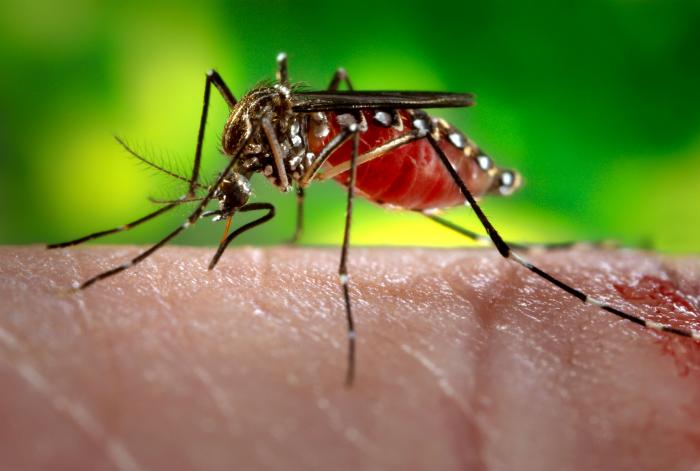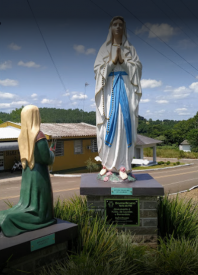2006Prof.
2006
Prof. Frank Hadley Collins, Dir., Cntr. for Global Health and Infectious Diseases, Univ. of Notre Dame
This 2006 photograph depicted a female Aedes aegypti mosquito while she was in the process of acquiring a blood meal from her human host, who in this instance, was actually the biomedical photographer, James Gathany, here at the Centers for Disease Control. Youll note the feeding apparatus consisting of a sharp, fascicle, which while not feeding, is covered in a soft, pliant sheath called the “labellum, which is seen here retracted, as the sharp stylets contained within pierced the host’s skin surface, as the insect obtained its blood meal. The fascicle is composed of a pair of needle-sharp stylets. The larger of the two stylets, known as the “labrum”, when viewed in cross-section takes on the shape of an inverted “V”, and acts as a gutter, which directs the ingested host blood towards the insect’s mouth. This females abdomen had become distended due to the blood meal she was ingesting, imparting the red coloration to her translucent abdominal exoskeleton.
The first reported epidemics of Dengue (DF) and dengue hemorrhagic fever (DHF) occurred in 1779-1780 in Asia, Africa, and North America. The near simultaneous occurrence of outbreaks on three continents indicates that these viruses and their mosquito vector have had a worldwide distribution in the tropics for more than 200 years. During most of this time, DF was considered a mild, nonfatal disease of visitors to the tropics. Generally, there were long intervals (10-40 years) between major epidemics, mainly because the introduction of a new serotype in a susceptible population occurred only if viruses and their mosquito vector, primarily the Aedes aegypti mosquito, could survive the slow transport between population centers by sailing vessels.
A Secretaria Municipal da Saúde de Doutor Ricardo informa que no dia 27 até dia 31 de março, os agentes comunitários de saúde, juntamente com fiscal ambiental e sanitária, estarão passando nas casas da zona urbana do centro do município para vistoriar e orientar sobre a presença de possíveis focos do mosquito aedes aegypti.
Solicita-se a colaboração de toda a comunidade para que recebam os fiscais e permitam que eles façam o seu trabalho para a saúde e o bem estar de todos.
Data de publicação: 16/03/2017


